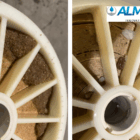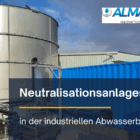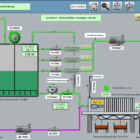The term oxygen demand describes the amount of oxygen required to completely break down organic and inorganic substances in water or wastewater. Oxygen demand is a key parameter in water and wastewater treatment, as it reflects the load of biodegradable substances in the water and their potential impact on the environment and biological treatment processes. In practice, oxygen demand is measured in different ways, depending on the objective and treatment stage.
Table of contents
Types of oxygen demand
1. biochemical oxygen demand (BOD - Biochemical Oxygen Demand)
The biochemical oxygen demand is the amount of oxygen required by microorganisms to biodegrade organic substances in an aqueous medium.
Measurement parameters:
- By default, the BOD is measured over a period of 5 days (BOD₅).
- A complete determination (BOD₇ or BOD₂₀) takes slowly degradable substances into account.
Reaction mechanism:
- Microorganisms oxidize organic substances under aerobic conditions.
Application in practice:
- Monitoring of organic pollution in wastewater treatment plant influents.
- Evaluation of the efficiency of biological treatment stages (e.g. activated sludge process).
- Definition of discharge limits for wastewater.
Limit values:
- Municipal wastewater treatment plants: BOD₅ values in the effluent should usually be below 20 mg/L.
- Industrieabwässer: Strengere Vorgaben je nach Branche, häufig < 10 mg/L.
2. chemical oxygen demand (COD)
The chemical oxygen demand measures the amount of oxygen required to completely chemically oxidize all organic and, in some cases, inorganic substances in a sample. COD is an important sum parameter in wastewater analysis.
Measurement parameters:
- The COD is determined by oxidation with potassium dichromate (K₂Cr₂O₇) in an acidic medium.
Reaction mechanism:
- Organic substances are chemically oxidized regardless of their biodegradability.
Application in practice:
- Faster determination than BOD, as no microbial processes are required.
- Monitoring the total load of wastewater, including substances that are difficult to biodegrade.
- Determination of wastewater treatment plant inlet and outlet values.
Limit values:
- Municipal wastewater treatment plants: COD values in the effluent should usually be below 90 mg/L.
- Industrial waste water: Stricter values depending on the area of application.
COD/BOD ratio:
- A low value (approx. 2:1) indicates readily biodegradable substances.
- A high value (> 4:1) indicates substances that are difficult to break down or toxic.
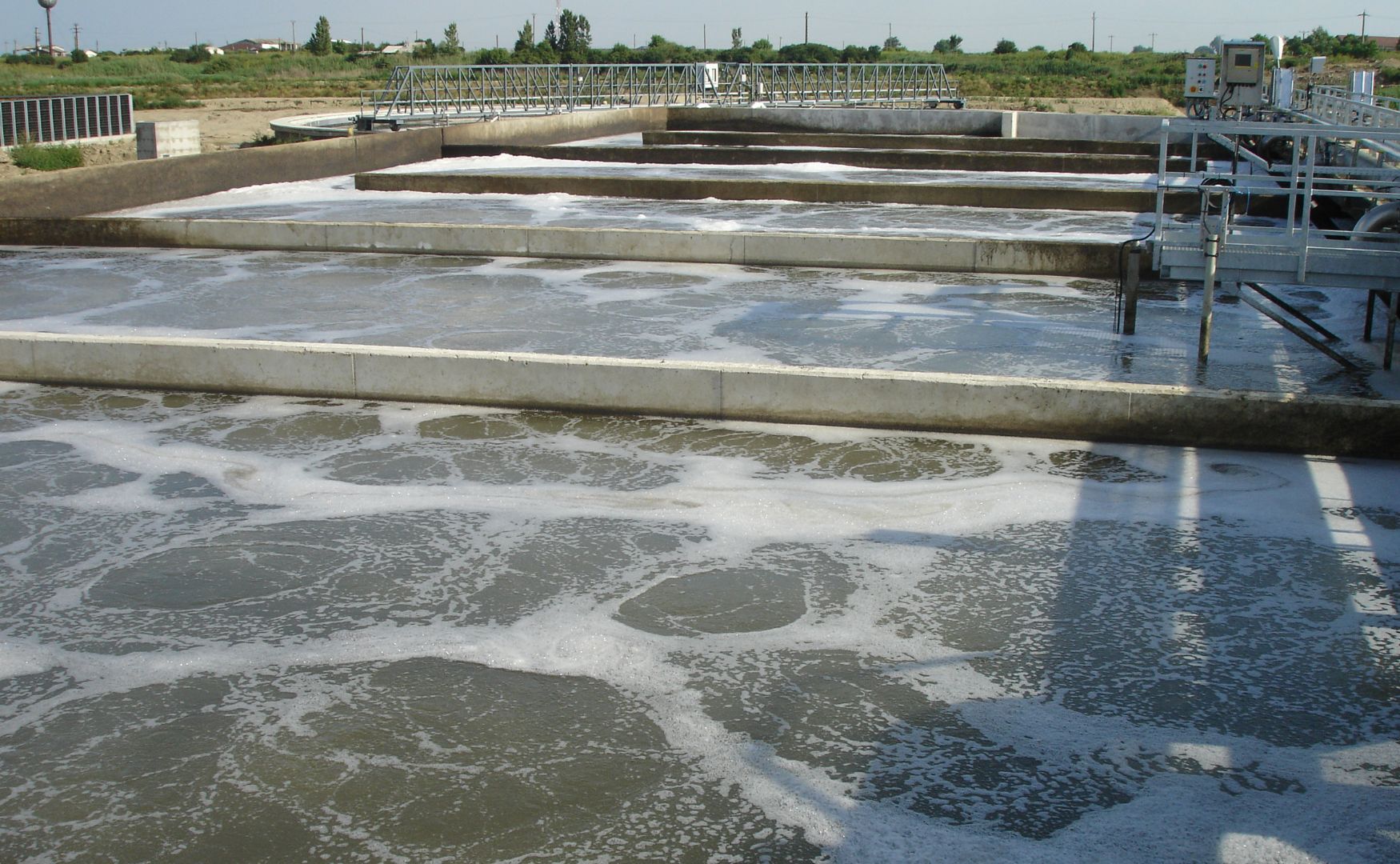
Photo: Aeration tank from our ALMA BHU BIO
3. theoretical oxygen demand (ThOD)
The ThOD is the calculated amount of oxygen required for the complete oxidation of a known compound.
Calculation:
- Based on the stoichiometric composition of the organic substances.
Application:
- Evaluation of compounds detected in water samples.
- Reference value for comparison with measured BOD and COD values.
4. total oxygen demand (GOB)
The GOB combines chemical and biological oxygen demand values to provide a complete assessment of all oxidizable substances in a water sample.
Importance of the oxygen requirement in practice
1. control of biological cleaning processes
- The oxygen demand indicates how much oxygen is required for biological wastewater treatment.
- In Activated sludge tank or Trickling filters a continuous supply of oxygen is essential:
- Typical oxygen demand: 1.5-2.5 kg O₂/kg BOD₅.
2. dimensioning of wastewater treatment plants
- The COD and BOD are used for the design of reactors, aeration systems and sludge treatment stages.
- High COD/BOD ratios require additional measures such as
3. discharge controls
- Industrial and municipal wastewater treatment plants monitor COD and BOD in the influent and effluent to ensure compliance with environmental regulations.
- Discharge of waste water into bodies of water:
- High oxygen demand can lead to oxygen deficiency and eutrophication.
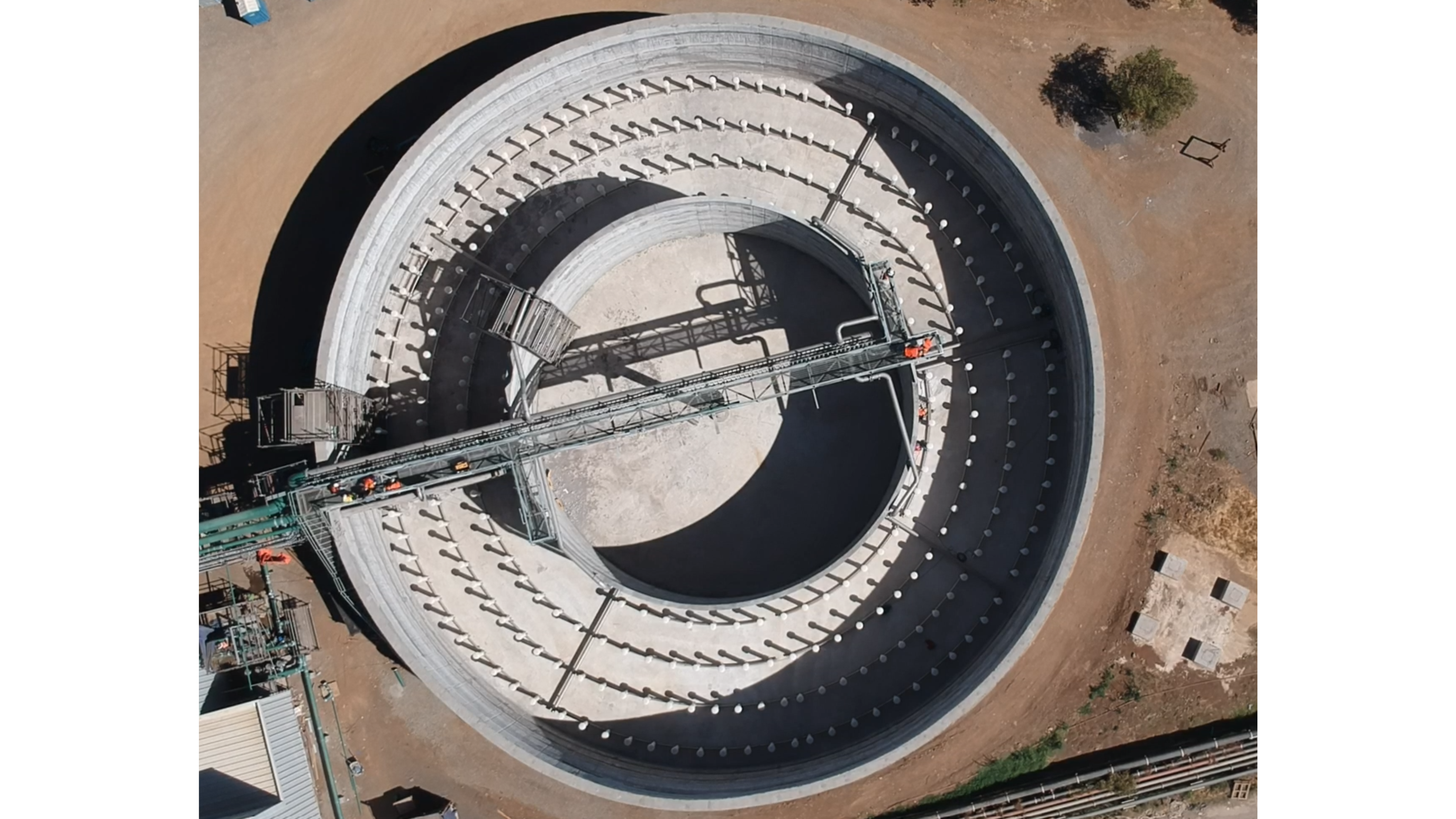
Photo: The aeration system of an aeration tank (process: ALMA BHU BIO)
Measurement methods for oxygen demand
1. biochemical oxygen demand (BOD)
- Standard test over 5 days at 20 °C in a darkroom.
- Use of diluted water and microbial inoculation.
- Result: Difference in dissolved oxygen at the beginning and after the incubation period.
2. chemical oxygen demand (COD)
- Standardized method according to DIN 38409.
- Oxidation of the sample with potassium dichromate and back titration of the remaining dichromate.
3. online measurements
- Use of optical oxygen sensors or amperometry for continuous monitoring.
Challenges and optimization
1. high oxygen demand values
- Causes:
- High content of substances that are difficult to break down (e.g. oils, fats, surfactants).
- High pollution from industrial sludge or chemical waste.
- Solution:
- Pre-treatment by flotation systems, for example.
- Optimization of the aeration systems to adapt to the oxygen load.
2. uneven load
- Fluctuating COD or BOD values can disrupt biological processes in wastewater treatment plants.
- Solution:
- Buffer tank for homogenizing the inlet load.
- Real-time monitoring and automated control of ventilation.
Conclusion
The oxygen demand is a fundamental parameter in water and wastewater technology that directly reflects the load of a system with biologically and chemically oxidizable substances. Precise knowledge and monitoring of BOD and COD values is essential for the design, control and optimization of water and wastewater treatment plants. Modern technologies such as real-time measurements and advanced oxidation processes support compliance with environmental standards and increased efficiency in practice.
For further information on our products, please feel free to contact us at any time!


